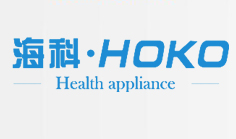What is a household air purifier? As the name suggests, it is a product that can purify the air for our family and bring health and fresh air to our family. In today's seriously polluted living family, the use of a household air purifier can be It is necessary to say that the purification effect of household air purifiers has been unanimously recognized by consumers, and household air purifiers are also widely used in our families. In order for everyone to have a more comprehensive understanding of the product of household air purifier, this article will introduce you to the advantages of the use of household air purifiers.
Home Air Purifier
Household air purifiers, also known as "air cleaners", air fresheners, and purifiers, refer to decorations that can absorb, decompose or transform various air pollutants (generally including PM2.5, dust, pollen, odor, formaldehyde, etc.) Pollution, bacteria, allergens, etc.), home appliances that effectively improve air cleanliness, are mainly divided into household, commercial, industrial, and building. There are many different technologies and media in the air purifier, which enable it to provide users with clean and safe air. Commonly used air purification technologies include: adsorption technology, negative (positive) ion technology, catalytic technology, photocatalyst technology, superstructure light mineralization technology, HEPA high efficiency filtration technology, electrostatic dust collection technology, etc.; material technologies mainly include: photocatalyst, activated carbon, Extreme carbon core filter technology, synthetic fiber, HEAP high-efficiency material, negative ion generator, etc. Most of the existing air purifiers are of composite type, that is, multiple purification technologies and material media are used at the same time.
Home Air Purifier
First, compare the air purification efficiency of the filtration process. Since most air purifiers in the passive adsorption purification mode use a fan + filter mode to purify air, dead corners will inevitably exist when the wind uses the air flow. Therefore, most passive air purification can only produce a certain amount of purification around the air purifier. The effect is that it takes a long time to filter all the indoor air, and it is difficult to have an effect on the purification of the entire indoor environment. Active air purification is to use the diffuse characteristics of the air to purify the air to every corner of the air purification factor, where the air can be diffused can produce a purification effect. Studies have found that under the principle of passive air purification, if the filter aperture can be small enough, the result of air treatment can only achieve the purpose of purification, that is, only "clean" air can be obtained; while negative ion air purifiers are different, not only It can effectively remove particulate pollutants in the air, decompose formaldehyde and other harmful gases, provide clean air to the indoor environment, and provide the indoor environment with negative air ions that are effective for human health care, so that the indoor air quality can reach "healthy air" standard.



 Jakchan86
Jakchan86
 JakChan
JakChan